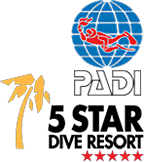Women’s Dive Day Matters for Women in Diving
by Fahmi, AMD-B’s 2024 Divemaster Internship
PADI Women’s Dive Day (WDD) is an annual event that celebrates and promotes the involvement of women in scuba diving. Started by the Professional Association of Diving Instructors (PADI), this day represents a commitment to gender equality and the empowerment of women. Since it began in 2015, PADI WDD has become a global movement, bringing together divers of all genders to honor the achievements of women in diving and to encourage more women to explore the underwater world.
Representation (empowering)
By showcasing women in diving, PADI Women’s Dive Day serves as a powerful platform where women’s talents and achievements are recognized and valued within dive communities. This representation is crucial as it highlights the diverse contributions women make to the field, from marine biology and underwater photography to dive instruction and environmental conservation. Celebrating these achievements helps to empower women and ensures they receive the recognition they deserve.

Breaking Down Barriers
Scuba diving has long been seen as a male-dominated activity. However, PADI Women’s Dive Day challenges this view by showing that women can and do thrive in the diving community. By putting the spotlight on female divers, the event helps to break down gender barriers and promotes inclusivity. This shift not only encourages more women to take up diving but also creates a more welcoming and diverse environment within the sport.
Inspiring Future Generations
One of the most significant impacts of PADI Women’s Dive Day is its potential to inspire future generations. When young girls see women excelling in the diving world, they gain role models who show them that pursuing a career in diving is not only possible but also rewarding. This inspiration can lead to young women dreaming big, whether it’s becoming marine scientists, professional divers, or underwater explorers.

Creating a Supportive Community
PADI Women’s Dive Day also creates opportunities for women to connect and support one another. By sharing experiences and building networks, female divers can form a supportive community that fosters growth and development. This sense of camaraderie is essential for both personal and professional development, providing a space where women can learn from each other and gain confidence in their abilities.
Promoting Confidence and Leadership
PADI Women’s Dive Day encourages women to be confident and to push boundaries in a traditionally male-dominated field. By celebrating women who have succeeded in diving, the event challenges stereotypes and demonstrates that women are just as capable of achieving greatness. This recognition helps women gain confidence in their abilities and can inspire them to take on leadership roles, ultimately contributing to a more balanced and diverse diving community.










